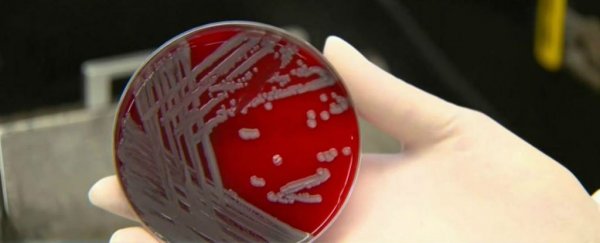A total of 54 people in Wisconsin have so far been infected by a mysterious kind of bacteria called Elizabethkingia since November, and 15 of them have died. The bacterium is not known for making people sick on this scale - which experts say is unprecedented - and right now, no one knows how so many are getting infected.
"The fact that we're seeing more than four dozen cases, that is a very large outbreak," Michael Bell, deputy director of the Centres for Disease Control and Prevention's (CDC) healthcare quality division, told Wired.
Last week, the Wisconsin Department of Health Services reported four new cases of the bacterial strain Elizabethkingia anophelis, announcing that infections have been confirmed in 12 Wisconsin counties so far.
If the bacterium makes its way to a person's bloodstream, it can cause fever, shortness of breath, chills, and cellulitis (bacterial infection of the skin), and in the worst cases, causes sepsis, which can be deadly, particularly in patients with existing diseases or compromised immune systems. Most of the patients who have died from Elizabethkingia infection during this outbreak have been over 65 and all had pre-existing conditions.
So how do you get infected with Elizabethkingia? Unfortunately, when it comes to this particular outbreak, no one's entirely sure. The bacterium is prevalent in the environment, but doesn't usually cause illness in people.
"At this time, the source of these infections is unknown and the department is working diligently to contain this outbreak," Wisconsin Department of Health Services announced to the press this week.
In the past, outbreaks have been linked to isolated sources, such as contaminated taps in hospital sinks at a London critical care unit. But what's so confounding about this outbreak is that patients are spread across 12 different counties, with a range of living conditions - some were infected in nursing homes, others in their own homes, and some were infected in hospitals, while others had not been in a hospital prior to getting sick.
What's even more strange is that genetic analysis of the bacteria involved suggest that all of the infections are coming from a single source, and somehow infecting people all over the southeastern and southern parts of the state.
The most obvious answer is that the Wisconsin tap water had been contaminated, but tests of the water supply have so far shown no signs of contamination. "That leaves us looking at a huge number of potential risk factors," including medications, foods and environmental sources, Bell told The Washington Post. "It's frustrating. The fact that all these cases share a fingerprint has us wanting to really track down the source."
The CDC now has 70 to 80 researchers working to identify the source of the outbreak, with eight experts currently on the ground in Wisconsin.
According to Wired, they basically have to knock on every patient's door and through careful questioning, try to find clues as to what they all might have in common, whether it's using the same lotions or wipes, or eating the same foods sourced from the same place. In 2011, the bacteria was discovered in the guts of mosquitoes, but there's been no solid evidence of transmission to humans in this way.
The CDC is continuing to analyse the local water, looking at the possibility that contaminated water was used on produce sold at a particular grocery store, but you can imagine how much work that's going to be. "The amount of potential exposure sources is very large," Bell told Wired.
The investigation is ongoing, so for now, we'll just have to wait and see what the results will bring, and hope that no one else contracts a fatal case of the disease.
